
- Home
- Workshops / Tours
- Diary / Blog
- Galleries
- Foreign Trips
- Tasmania 2016
- NE Queensland 2016
- Western Alps 2016
- NE Spain 2016
- Australia's Wet Tropics 2015
- Australia's Top End 2015
- SW Australia 2015
- Switzerland 2015
- Andalucia 2015
- Belize 2015
- Australia 2014
- Switzerland 2014
- Belize 2014
- Bahama Islands 2014
- Switzerland 2013
- Ecuador 2012-2013
- Florida 2011-2012
- Vancouver Island 2011
- Australia 2010
- Peru 2008
- Bulgaria 2007
- Lesvos 2006
- California 2006
- New Zealand 2005
- Extremadura 2005
- Goa, India 2004
- The Gambia 2003
Southern Peru
25th November-14th December 2008
Huacarpay Lake
The high Andean lakes and marshes at Huacarpay lie only a 30 minute drive away from the city of Cuzco.
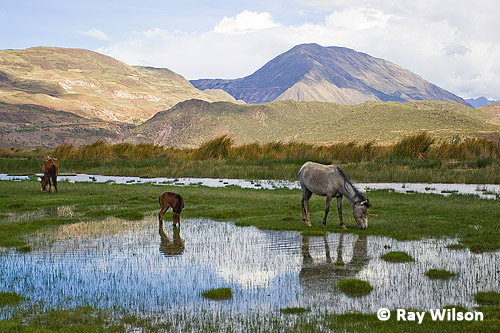
Flooded fields at the edge of Huacarpay Lake
A good variety of waterbirds reside here (mostly too distant for photography) and it is the best place to see a spectacular endemic hummingbird with one of the most ridiculous common names in the world: the Bearded Mountaineer. It conjured up all kinds of amusing images in my mind when Steve told me I would have a chance to shoot a Bearded Mountaineer...
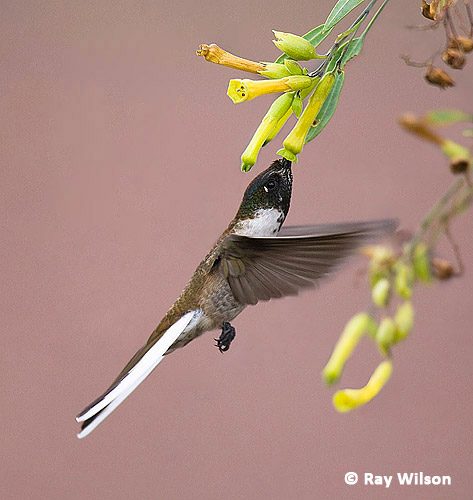
Bearded Mountaineer (Oreonympha nobilis)
Sure enough, we found a beautiful male of this large hummingbird who performed fantastically for us in quite windy conditions.
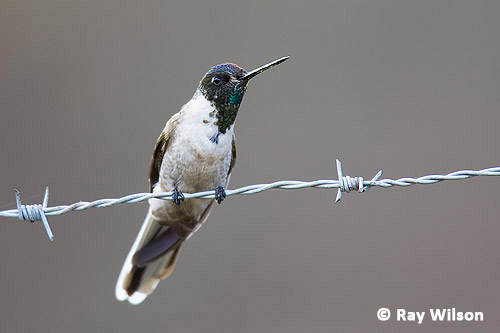
Bearded Mountaineer (Oreonympha nobilis)
Black-throated Flowerpiercers have a different strategy for feeding on the nectar of tubular flowers. Because their bills are too short to reach the nectar stores, they pierce the base of the flowers with their specially adapted beak and steal the nectar directly, bypassing the plant's pollination mechanisms.
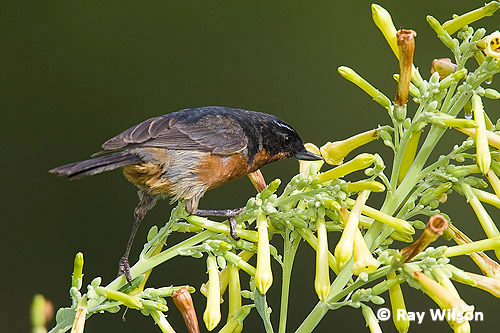
Black-throated Flowerpiercer (Diglossa brunneiventris)
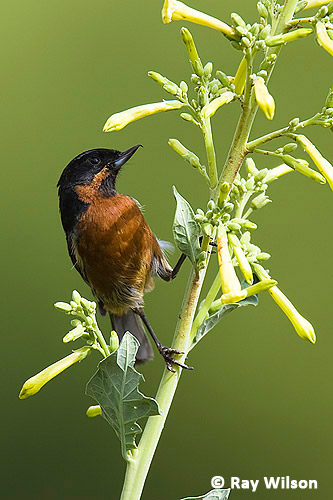 Black-throated Flowerpiercer |
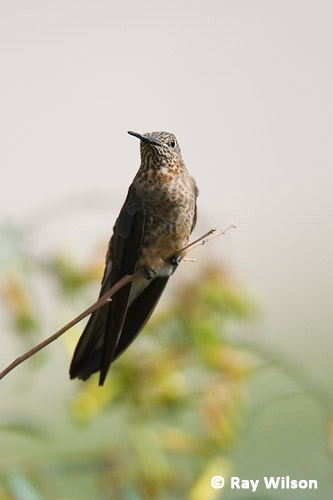 female Giant Hummingbird |
Around the marshy ground surrounding the lake, wading birds such as Puna Ibis can be seen...
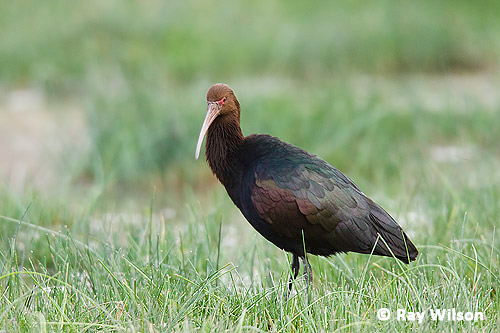
Puna Ibis (Plegadis ridgwayi)
The reedbeds at the northern edge of the main pond are a good place to see some reedbed specialists, such as Wren-like Rushbird...
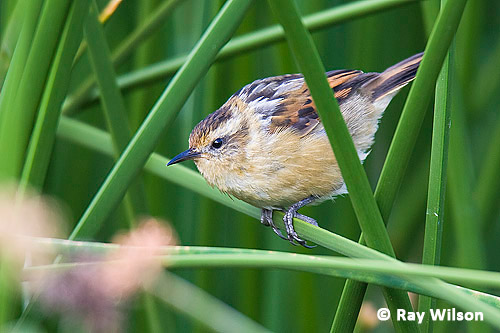
Wren-like Rushbird (Phleocryptes melanops)
...and the spectacularly beautiful Many-coloured Rush-Tyrant.
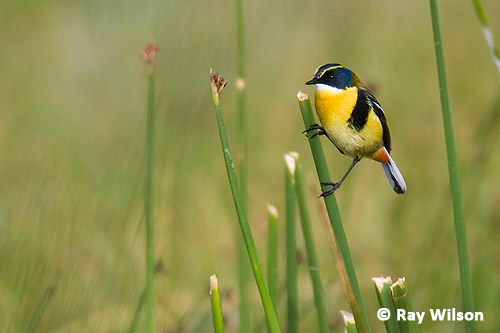
Many-coloured Rush-Tyrant (Tachuris rubrigastra)
Most of the more water-associated birds, such as Wilson's Phalarope and White-tufted Grebe, were too distant for photography, but a couple of species ventured close enough for some half-decent photos.

Andean Coot (Fulica ardesiaca)
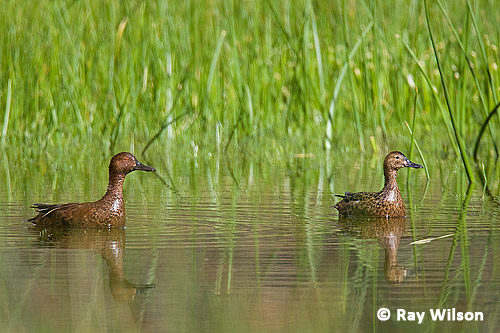
Cinnamon Teal (Anas cyanoptera)
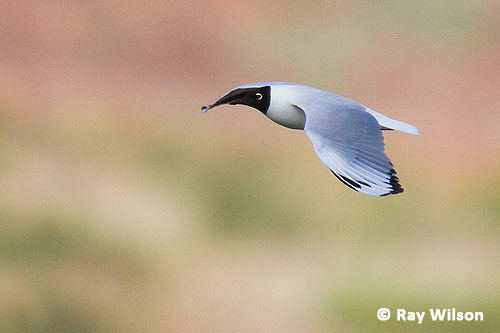
Andean Gull (Larus serranus)
Cuzco is the former Inca capital, and standing at an altitude of 3400m (11,150ft) above sea-level is one of the highest cities in the world.
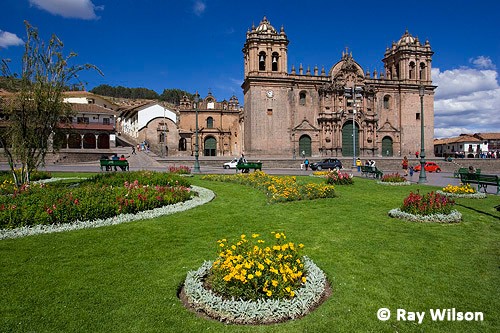
Cuzco main plaza
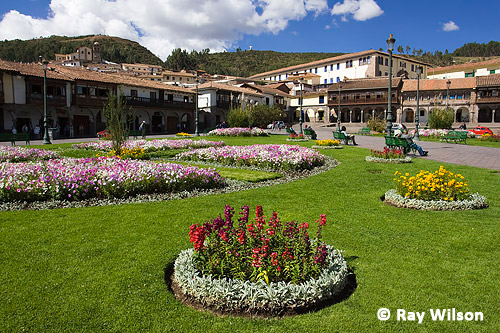
Cuzco main plaza
After conquering the city, the spanish built a new city on top of the existing incan palaces. Many of these old inca-built walls were re-exposed after a major earthquake in 1950, and can now be seen in many places in the city centre, such as the street below.
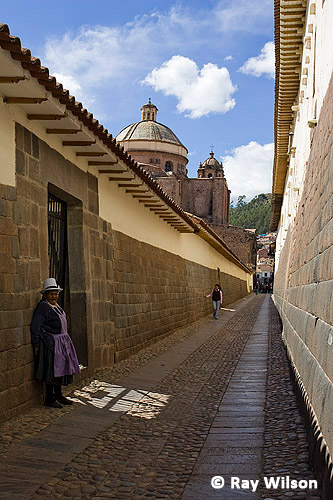
Inca walls along a Cuzco street
Ray Wilson owns the copyright of all images on this site.
They may not be used or copied in any form without prior written permission.
raywilsonphotography@googlemail.com